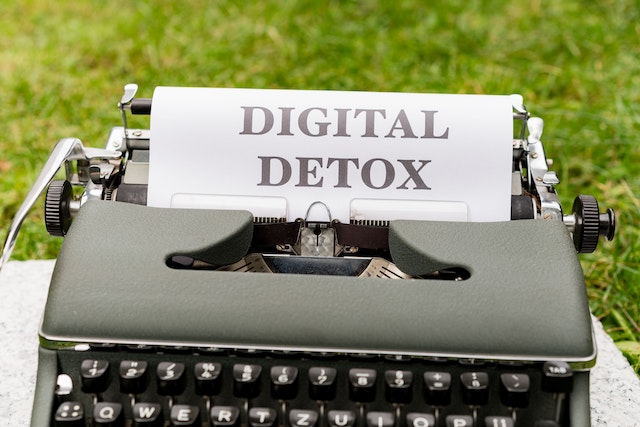
Digital Detox: Regain Your Focus and Reduce Screen Time
October 25, 2023
In today’s digitally connected world, screens have become an integral part of our daily lives. We use smartphones, tablets, computers, and televisions for work, entertainment, and communication. While these devices have undoubtedly improved our lives in many ways, excessive screen time can have negative effects on our physical and mental health, as well as our overall productivity. In this article, we’ll explore the concept of a “digital detox” and provide valuable tips to help you regain your focus and reduce screen time.
The Impact of Excessive Screen Time
Excessive screen time can lead to a range of negative consequences, including:
- Physical Health Issues: Prolonged screen time can contribute to health problems such as eye strain, poor posture, and even sleep disturbances. The blue light emitted by screens can disrupt your sleep patterns.
- Mental Health Challenges: Excessive use of digital devices has been linked to mental health issues such as anxiety, depression, and feelings of loneliness. Constant exposure to social media and online content can lead to negative self-comparisons and low self-esteem.
- Decreased Productivity: Constant notifications and distractions from digital devices can hinder your ability to concentrate and complete tasks efficiently. Multitasking, often encouraged by digital devices, can actually reduce productivity.
- Reduced Social Interaction: Overreliance on screens can lead to decreased face-to-face social interactions, which are essential for building and maintaining meaningful relationships.
- Addiction: Excessive use of screens can lead to digital addiction, characterized by an overwhelming urge to check devices and social media. It can be difficult to control and may negatively impact your daily life.
What Is a Digital Detox?
A digital detox is a period during which an individual intentionally reduces or eliminates their use of digital devices. The goal of a digital detox is to create a healthier balance between screen time and real-life activities. It can vary in duration, from a few hours to several days or weeks, depending on individual goals and needs.
Benefits of a Digital Detox
Embracing a digital detox can offer several benefits, including:
- Improved Mental Health: Disconnecting from screens can reduce stress and anxiety, providing a mental reset. It allows you to be present and mindful of your surroundings.
- Enhanced Focus and Productivity: Removing digital distractions enables you to concentrate on tasks, fostering improved productivity and better time management.
- Quality Time with Loved Ones: A digital detox can provide an opportunity to reconnect with family and friends, fostering deeper and more meaningful relationships.
- Better Sleep: Reducing screen time, especially before bedtime, can lead to improved sleep quality by allowing your brain to naturally wind down.
- Increased Creativity: Disconnecting from constant digital input can stimulate creativity and inspiration, leading to fresh ideas and novel experiences.
Tips for a Successful Digital Detox
Embarking on a digital detox may seem daunting, but with a well-planned approach, it can be an enriching experience. Here are practical tips to help you get started:
1. Set Clear Goals
Define the purpose of your digital detox. Are you seeking improved focus, better mental health, or a healthier work-life balance? Having clear goals will motivate and guide you during the process.
2. Choose a Duration
Decide how long you want your digital detox to last. It can be as short as a few hours or as long as a week or more. The duration should align with your goals and lifestyle.
3. Communicate Your Detox Plan
Inform friends, family, and colleagues about your digital detox. Let them know when you’ll be less reachable and request their support and understanding during this period.
4. Establish Boundaries
Set clear boundaries for your digital detox. For example, you can establish “tech-free zones” in your home, like the bedroom or dining area, where screens are not allowed.
5. Identify Digital Triggers
Recognize the situations or emotions that trigger excessive screen time. Whether it’s stress, boredom, or habit, identifying triggers is the first step in addressing them.
6. Prepare Offline Activities
Plan activities to fill the time you would typically spend on screens. This can include reading, exercising, practicing a hobby, or simply enjoying nature.
7. Use Digital Detox Apps
There are apps designed to help you reduce screen time by tracking your usage and setting limits on specific apps or websites. Consider using them as tools to support your detox.
8. Limit Notifications
Reduce the number of notifications on your devices, especially non-essential ones. This can help you resist the urge to constantly check your devices.
9. Designate Screen-Free Times
Schedule periods of the day when screens are off-limits. For example, make the first hour of your morning and the last hour before bed screen-free.
10. Find Support
If possible, embark on a digital detox with a friend or family member. Sharing the experience can be motivating and fun.
11. Reflect and Reevaluate
During and after your digital detox, reflect on your experience and its impact on your life. Consider whether you need to make permanent changes to your digital habits or continue with occasional detoxes.
12. Stay Mindful
Practice mindfulness during your digital detox. Pay attention to the present moment, your emotions, and your physical sensations. Mindfulness can help you fully engage in offline activities and reduce the urge to reach for your device.
Remember that a digital detox doesn’t mean eliminating screens from your life completely; rather, it’s about establishing a healthier and more balanced relationship with technology. By implementing a digital detox and being mindful of your screen time, you can regain your focus, improve your well-being, and enjoy the benefits of a more balanced digital lifestyle.
